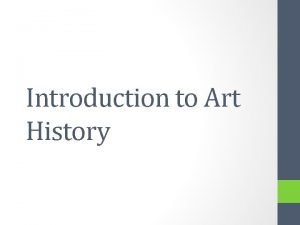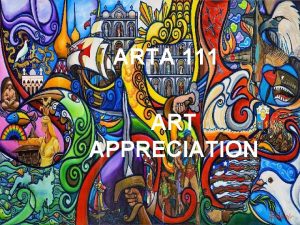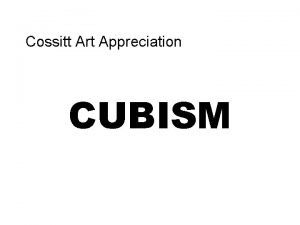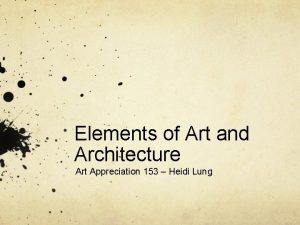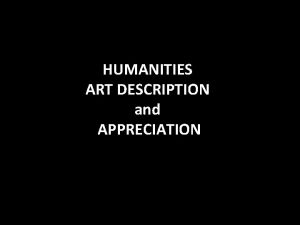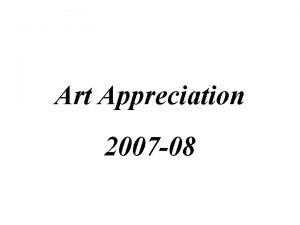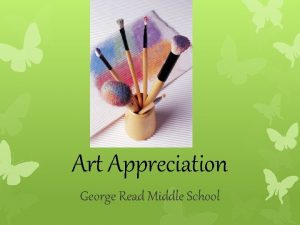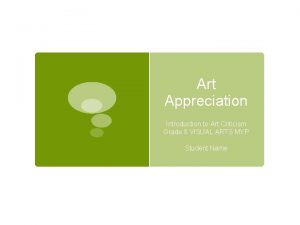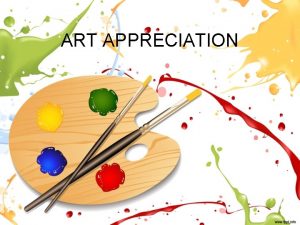Introduction to Art History The Arts Appreciation of









- Slides: 9

Introduction to Art History

The Arts • Appreciation of the art is defined as: • Creating, performing and responding to dance, drama/theatre, music and visual arts

Appreciating • To appreciate the art there are three processes • Creating new works • Performing works for expressive purposes • Responding to artworks • The artist creates or performs and the audience responds.

The creative process • An artist must respond to their own work • Self-evaluating one’s own work allows the artist to judge how they can make it better • The visual artist literally steps back and views their paintings, portraits, drawings, etc • The actor/dancer/musician has others to critique their work to make improvements • American Idol, So you think you can dance.

Communication • Artists create works to communicate ideas, feelings or beliefs. • Most visual artists work independently. • Visual art is non-temporal (without time) • Meaning the person viewing Da Vinci’s Mona Lisa today is seeing the same painting that was finished 400 years ago.

Performing • Performing Arts (music, dance, drama/theatre) are temporal • Meaning it takes time to experience the art form. • The performance is meant for a live audience • The audience responds to the artistic expression either emotionally and/or intellectually • the reaction of the audience can determine the quality of the play

Branches of Humanities • including languages, art, literature, history, mathematics, and philosophy • We will learn about • Dance • Drama/Theatre • Visual Arts • Music

Interrelationships among the Arts • The arts share commonalities in structures, purposes, creative process and their ability to express ideas, feelings and emotions.

Students will be able to… • Compare and contrast one art form (music) to another (visual arts) from the same time period • Be able to analyze/explain how ideas and emotions expressed in one art form (theatre) are similar/different to ideas and emotions expressed another art form (dance)
 What is drama in art appreciation
What is drama in art appreciation Art and artisans production process
Art and artisans production process How does art criticism differ from art appreciation?
How does art criticism differ from art appreciation? What is humanities in art appreciation
What is humanities in art appreciation Creative arts programme of assessment
Creative arts programme of assessment Music appreciation elements of music
Music appreciation elements of music What is cubism in art appreciation
What is cubism in art appreciation Art appreciation architecture
Art appreciation architecture Composed primarily to be sung.
Composed primarily to be sung. Art discussion questions
Art discussion questions
